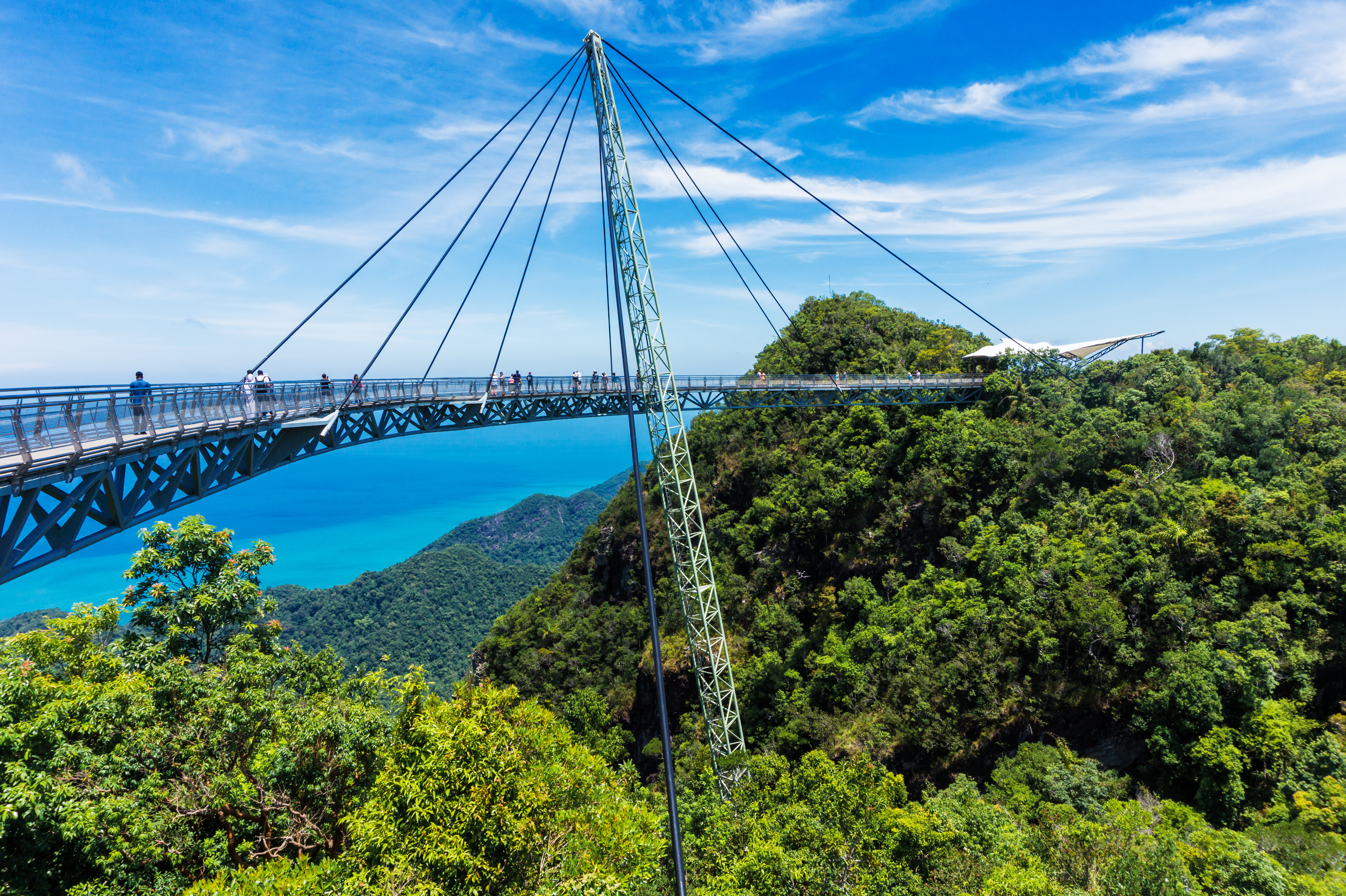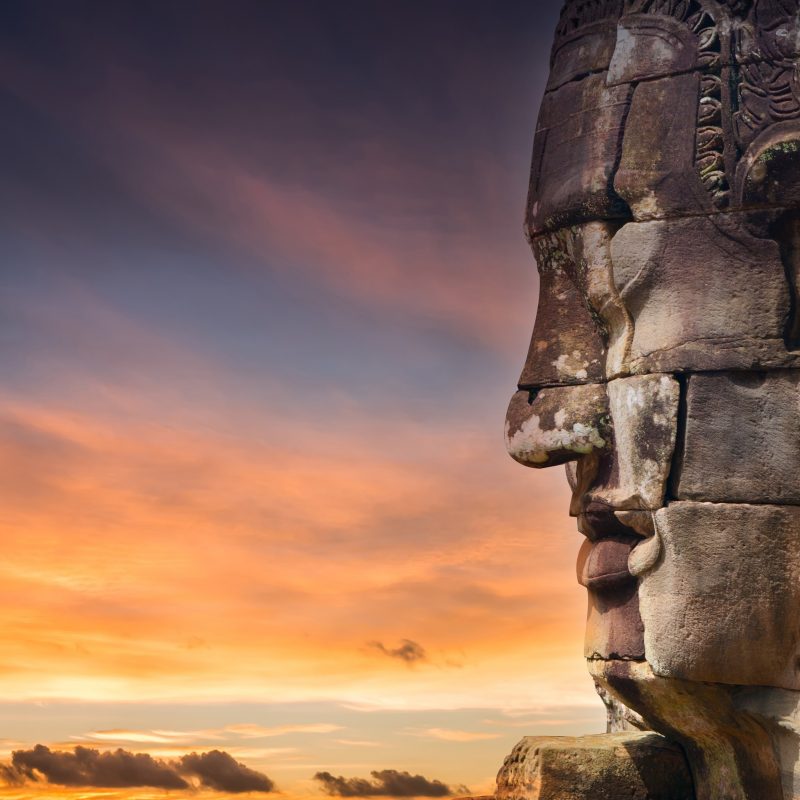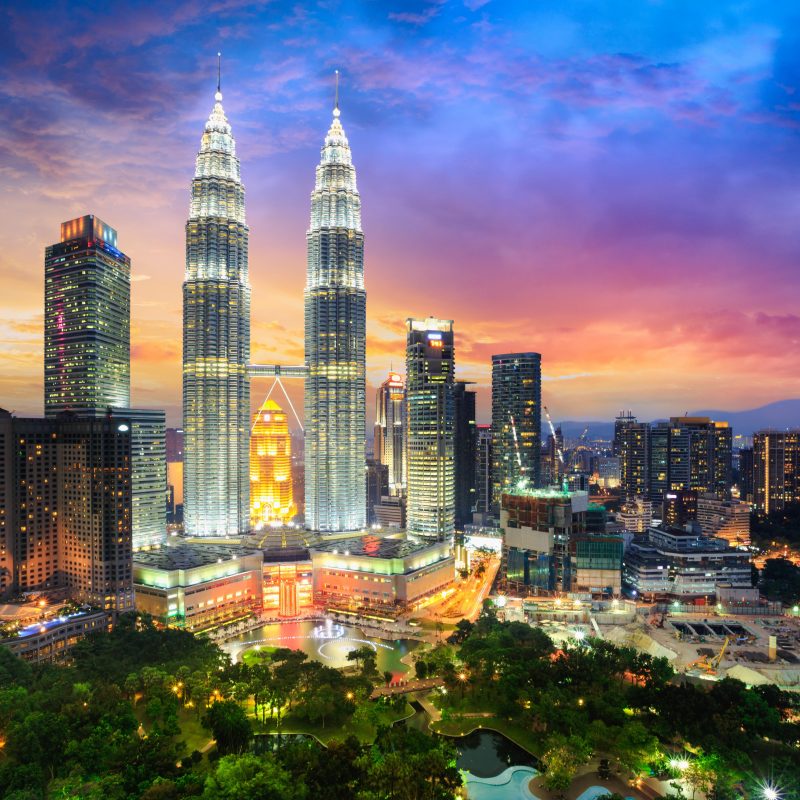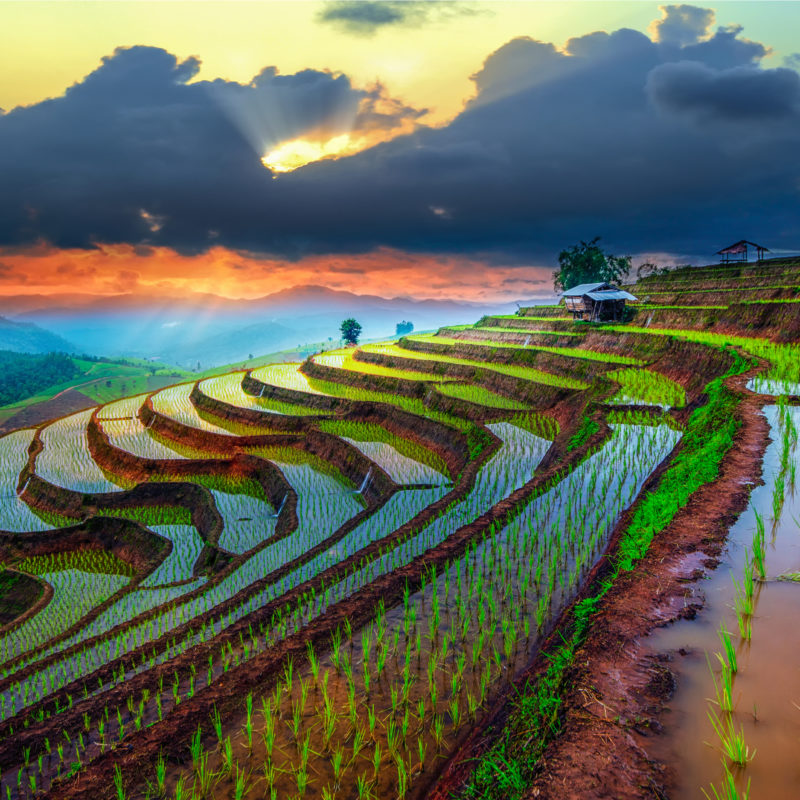Welcome to Low Season Southeast Asia!
Why should we consider travelling to Southeast Asia in the low season? Doesn’t it mostly overlap with the rainy season?
Before we start, let’s get some facts straight.
Does it rain ALL day during the rainy season?
Rarely.
Rains tend to fall in heavy bouts for just a few hours at relatively predictable times each day (usually during the mornings) leaving the rest of the day bright and fresh leaving a welcome coolness to the air.
What are the general weather patterns?
Thailand, Laos, Vietnam, Cambodia, Myanmar and the Philippines experience very similar weather patterns year-round. The three main seasons are; Dry, Hot and Wet.
• Dry season – November to February.
• Hot season – March to May.
• Wet season –June to October.
On the other hand, Malaysia, Indonesia and Singapore have a different pattern. Here, there are only two seasons which each last for around half the year; Wet and Dry (it’s always hot!)
• Wet season – October to March.
• Dry season – April to September.
Why should we travel during the low season here?
• Better Value Activities
Whether you’re booking these independently or via your Tour Leader, some activity prices are also likely to drop over this period. Meanwhile, you won’t have to book weeks in advance and you may even get a nice low-season discounted rate!
• Better Value Accommodation
Many accommodation providers see their arrivals drop when the wet season approaches and so most of them tend to lower their prices in order to tempt travellers to visit.
HERE ARE OUR TOP TIPS FOR LOW-SEASON TRAVEL
• Always pack light cotton clothing, sandals, and flip-flops.
• Mosquito population increases, so remember to pack insect repellent.
• Allow extra travel time – the roads can deteriorate in bad weather conditions so bus routes may take a little longer than expected.
• Don’t forget your sunscreen. Don’t let the clouds and rain deceive you! (yes, we’ve had our fingers burnt before…erm…and our shoulders, face and legs)
• Embrace the rain! You’ll never experience such warm tropical downpours at home so rather than cowering and hiding from it, we say “dance in the rain!” You’ll feel so alive and refreshed and who cares if get soaked? You’ll soon dry off in the heat anyway. too much about umbrellas. They are sold on almost every street corner.
• Hate getting your hair wet? We understand. Don’t worry too much about umbrellas. They are sold on almost every street corner.
This is Southeast Asia. It’s wrapped in tropical rainforests, surrounded by golden beaches, pushed up by powerful volcanoes, lashed through by raging rivers, carved by karst landscapes, doted on by the ruins of lost civilizations, awakened by the spiritual sounds of religion.
It’s LOW SEASON – but it’s still the Southeast Asia you’ve always dreamed of!
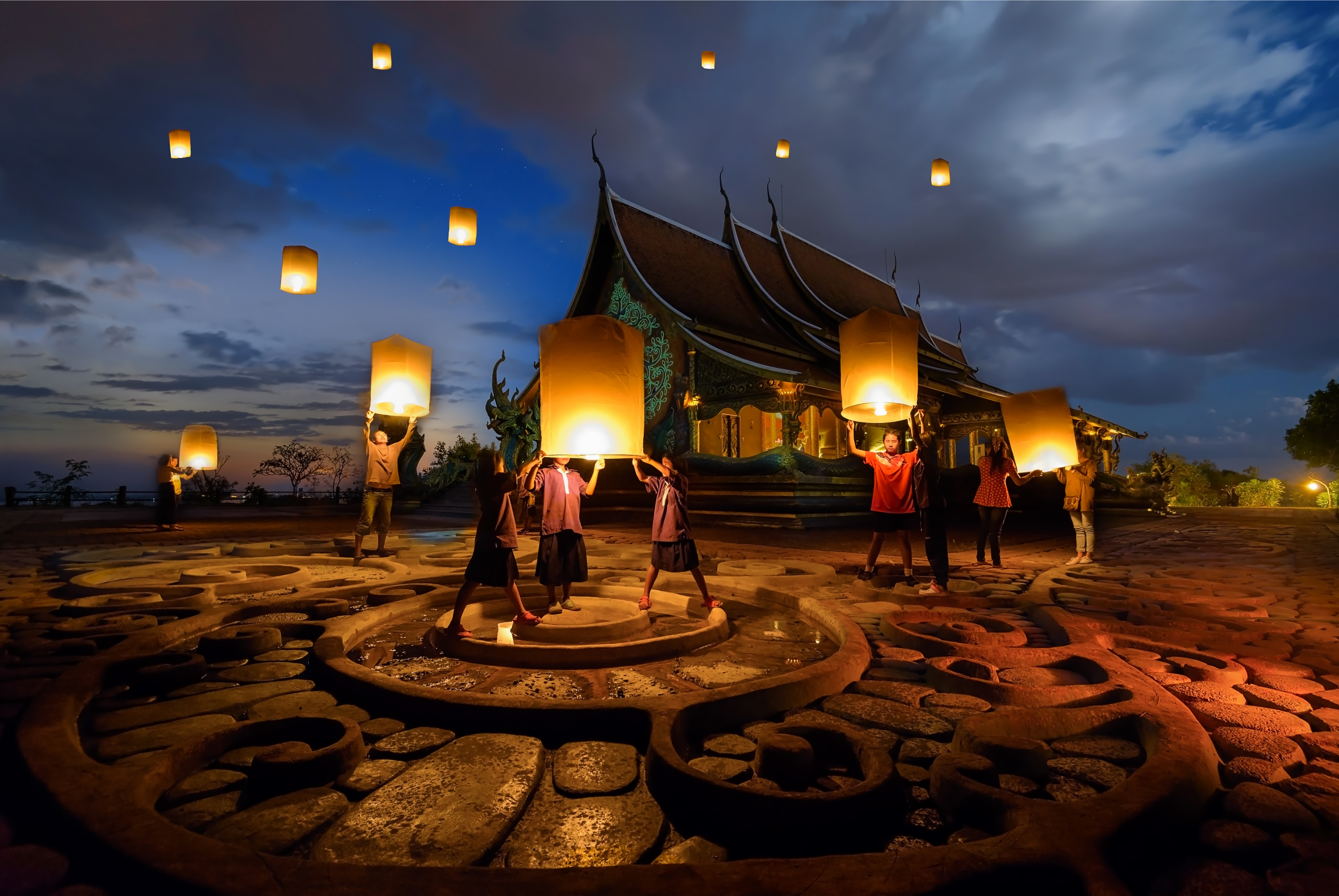
Best For: Local Festivals
Where: Cambodia, Thailand & Malaysia
When: Various
In Southeast Asia, some important festivals fall within the low season months. Locals welcome the arrival of the rains after a long, dry season, so there are a ton of celebrations and festivals for you to immerse yourself in. Festivals are the perfect way to get to know more about the culture in each destination since they serve as an expressive way to celebrate beliefs, ceremonies, heritage and traditions of local community.
More interaction with the locals, fewer tourists, immersive experiences.
NB: Most Buddhist and Hindu religious festivals follow the lunar calendar, so dates do vary each year.
The Royal Ploughing Ceremony
2021 date: 30 Apr (Cambodia); 11 May (Thailand)
Bountiful harvest season. This royal ceremony employs astrology and ancient Brahman rituals to kick off the rice-planting season, blending Hindu and Buddhist traditions.
Visakha Bucha
2021 date: 24 May (Cambodia); 26 May (Thailand)
This Buddhist holy day, the 15th day of the waxing moon in the sixth lunar month, commemorates Buddha’s birth, enlightenment and parinirvana (death). Ceremonies, including the lighting of hundreds of candles, are held at temples throughout Cambodia, Laos, Myanmar and Thailand.
Gawai Dayak
2021 date: 1-2 Jun (Malaysia)
The end of the rice-harvest season is celebrated on the first two days of June in Sarawak (Malaysian Borneo). City-dwelling Dayaks return to their longhouses to socialize, feast and down shots of tuak (rice wine).
Asanha Bucha
2021 date: 24 May (Cambodia);26 May (Malaysian); 24 Jul (Thailand)
This festival commemorates Buddha’s first sermon. Followers flock to temples to light candles, offer flowers and pray for good fortune.
Khao Phansa
2021 date: 25 Jul (Thailand)
With the onset of the rainy season, Buddhist monks retreat into monasteries, and young men and boys are ordained as novices. Worshippers offer candles and donations at temples, people celebrate with a grand parade.
Festival of the Nine Emperor Gods
2021 date: 4-13 Oct (Thailand)
In Thailand, this Taoist event is called the Vegetarian Festival and is marked by abstinence from meat and other purification rituals.
Best For: A Jungle Adventure
Where: Langkawi, Malaysia
When: Mar-Jun
Langkawi in Malaysia is an ideal choice for adventurers, known for its sun and beautiful beaches, 2,220 metre high cable cars and luxury resorts, many of which are built with natural sustainable materials. Explore Limestone outcrops and caves by boat to see monkeys, snakes, Eagles and Otters, and near stunning mangroves. As you follow the meandering trails of picturesque mountain streams, you will see centuries-old trees towering above you. In many of the resorts we prefer, in Langkawi, you can enjoy watching a variety of monkeys, flying foxes and gliding squirrels from your own verandah – just make sure to close the doors afterwards as they have been known to venture inside if you have fruit lying around…

Best For: Jungle River Experience
Where: Mekong River, Vietnam
When: Jun-Aug
Cruise along the beautiful Mekong River and step back in time as your journey unfolds through the stunning countryside: farmers with conical hats work in fields that disappear into the horizon, whilst water buffalo plough the paddies until the sun sets in a blood-red explosion of colour. Observe riverside life and the wooden houses balancing on stilts, as giggling children watch you go by. The lush tropical vegetation contrasts with the rustic natural low housing.
The Mekong River is a trans-boundary river through the heart of Southeast Asia and the longest river in This area.
There are many slow boats during the peak season (December through February) and it can get very crowded and uncomfortable at times so low season is definitely the way to go for a more authentic and easy going experience.
“My mother sometimes tells me that never in my whole life shall I ever again see rivers as beautiful and big and wild as these, the Mekong and its tributaries going down to the sea, the great regions of water soon to disappear into the caves of the ocean. In the surrounding flatness stretching as far as the eye can see, the rivers flow as if the earth sloped downwards.” – Marguerite Duras, ‘The Lover’
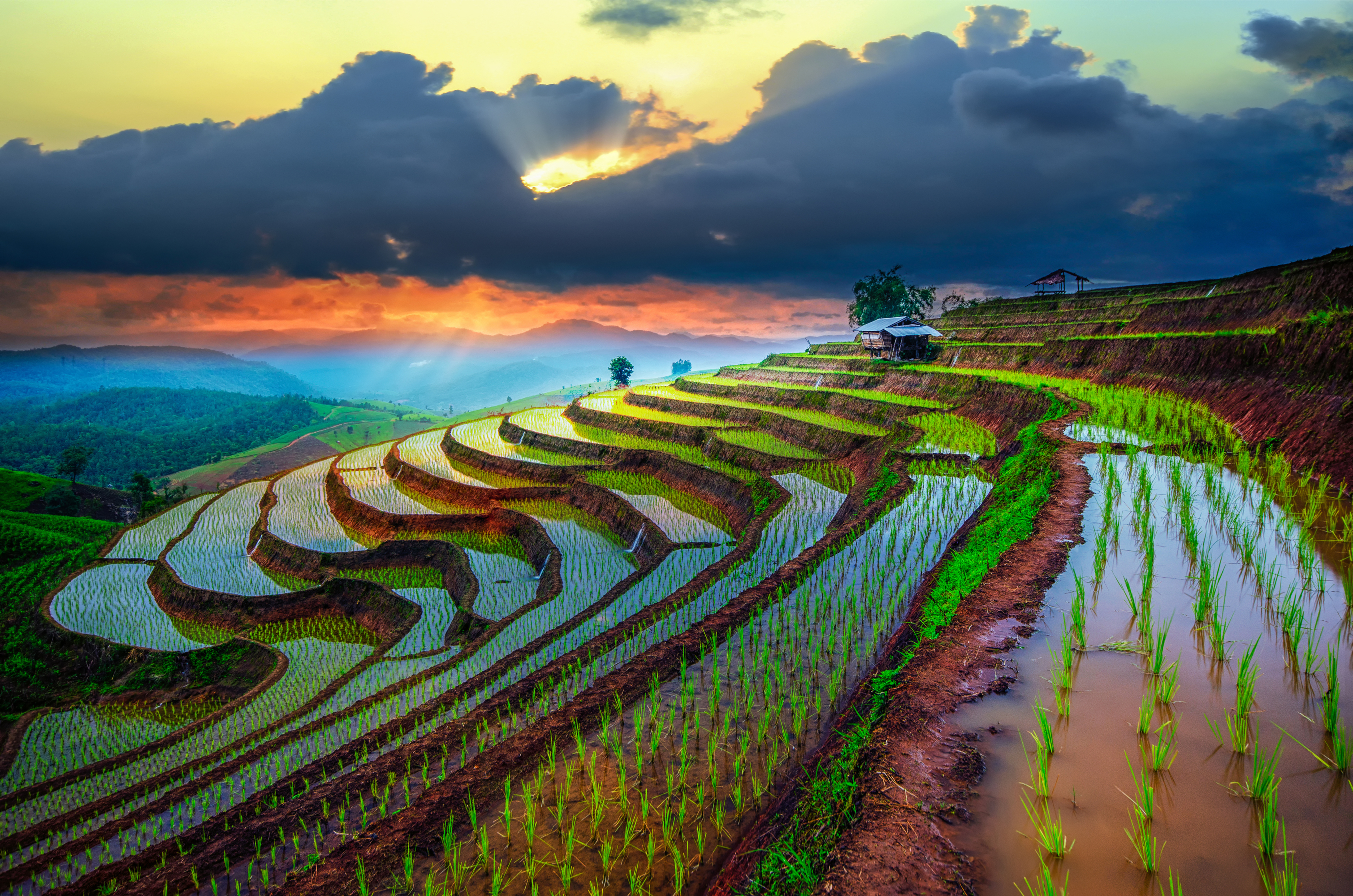
Best For: Real Thai Massage
Where: Chiang Mai, Thailand
When: May-Oct
They say that there are many things in life which you either love or hate; (Marmite springs to mind), well at Low Season Traveller we are equally divided as to whether Thai Massage is a little slice of heaven or the work of the devil! If having every sinew of your body pummelled within an inch of its life is what you truly desire, read on….
Don’t be fooled by gentle sounds, sweet scents of essential oils and hushed calming voices. Wearing loose, comfortable clothing and lying on a mat or firm mattress on the floor, your body is compressed, pulled, stretched and rocked, the hands are fixed on the body, the fingers, toes, ears, cracking knuckles and joints…Yes, this is the reality of the traditional Thai massage scene.
Thai massage or Thai yoga massage is a traditional healing system combining acupressure, Indian Ayurvedic principles, and assisted yoga postures, and is said to be thousands of years old but it is still part of Thailand’s medical system due to its perceived healing properties at both the emotional and physical levels. UNESCO added traditional Thai massage to its Cultural Heritage of Humanity list in December 2019.
You can’t come to Thailand and not indulge in at least one traditional massage.
Every road in Chiang Mai swamped with the opportunities for massage, but they can be split simply into three types you should know:
• High end – these places are the ones that are most like a Western ‘spa’ experience and often offer facilities beyond the treatment alone.
• Middle of the range – there is quite a variance within these places but the one thing they all have in common is that they all offer private treatment rooms.
• Lower end- These places can still offer brilliant massages, often the only difference between these the others is that they tend to offer shared massage spaces.
NB: By the way, unlike with western oil massage, traditional Thai massage uses no oils or lotions.
Thai Massage Etiquette
• Leave your shoes/sandals outside the door of the massage parlour.
• Feet are the least sacred part of your body in Buddist culture (which is the culture of Thailand)
• It is usual to tip for good service.
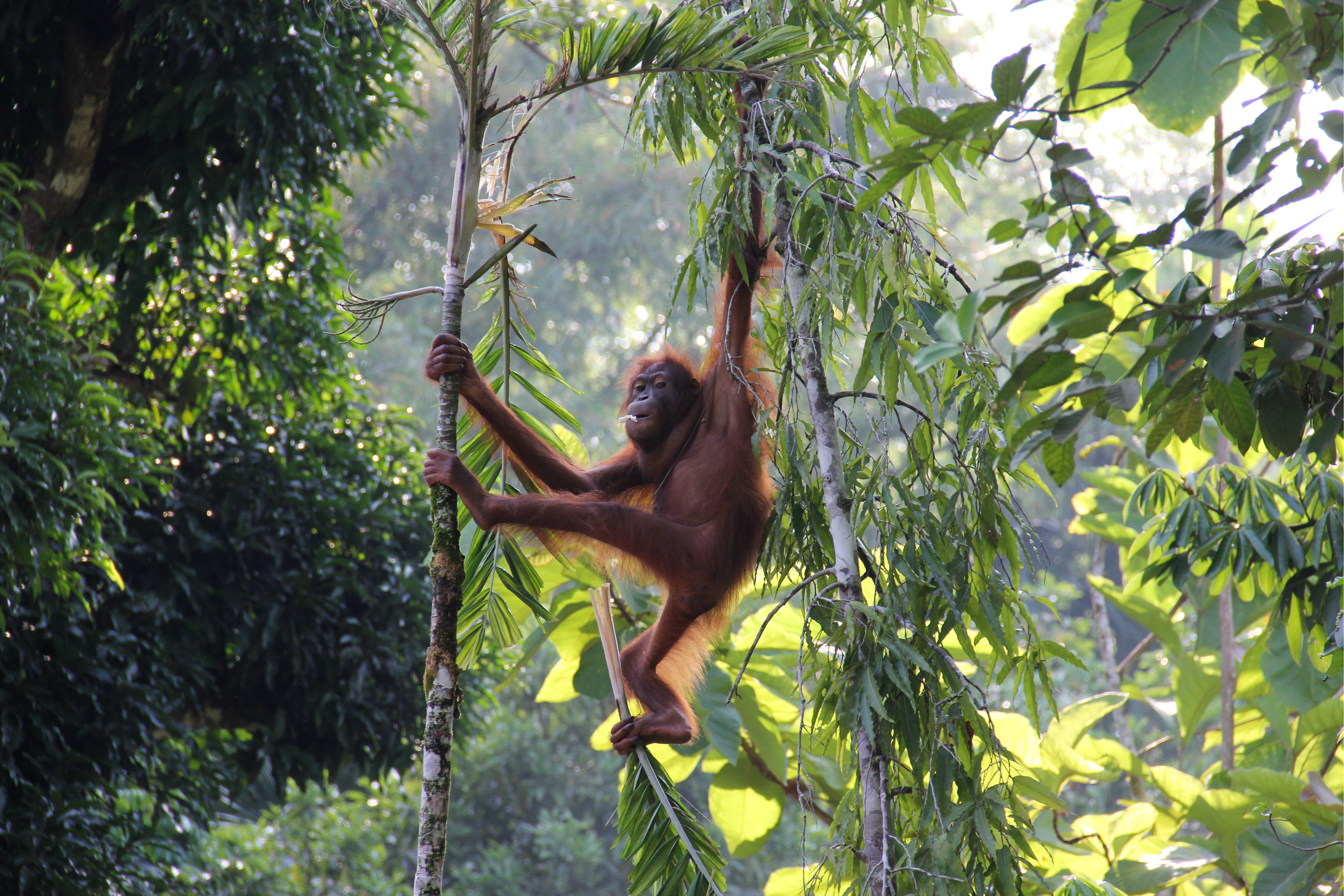
Best For: Family Adventure
Where: Sabah & Sarawak, Borneo, Malaysia
When: Mar-Jun
If your children are under 8, we would recommend Sabah. If your children are older, then Sarawak is more suitable for you as it will provide more interesting cultural exploration. However with both Sabah and Sarawak, you have two perfect options to provide your family with tons of fantastic wildlife and a trip of a lifetime.
As the capital of Sarawak, Kuching is a base from where you can take trips into the surrounding countryside. Trekking through into Bako National Park, you will have the opportunity to see all manner of tropical creatures including; Long-tailed macaque monkeys, silver leaf monkeys, wild boar, flying squirrels, monitor lizards as well as the rare and unusual proboscis monkeys. In the low season, you will also have the opportunity to see Irrawaddy dolphins. Or follow an official guide into the original inhabitants of Borneo to experience their long, communal wooden buildings known as ‘longhouses’.
Perhaps the most famous inhabitants of Sabah, however, are without a doubt the Orangutans. A firm favourite not only with families, is the incredible Sepilok Orangutan Rehabilitation Centre which shelters around 70 orangutans that are being gradually rehabilitated for release back into the wild.
From Sepilok, you can progress into the jungle along the Kinabatangan River, floating down the Kinabatangan’s quieter tributaries, the naturalist guides are constantly on the lookout for wildlife to show you. Proboscis monkeys dangle from the trees and, sometimes, you can see the distinctive silhouette of a hornbill on the horizon.
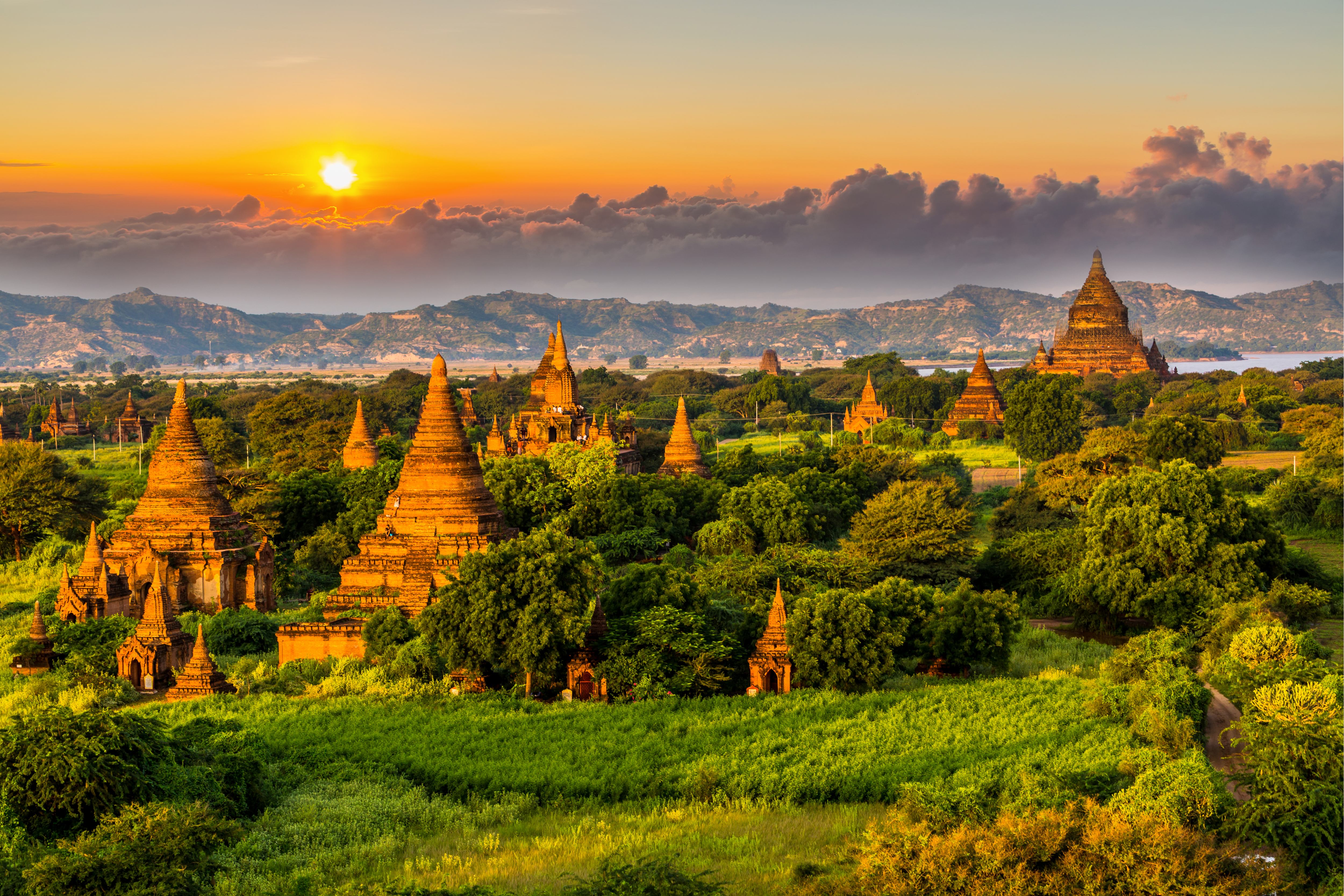
Best For: Cultural Heritage
Where: Cambodia & Myanmar
When: May-Sep
Angkor, the ancient capital of the Khmer Empire, is one of the greatest archaeological sites in Southeast Asia and the largest single religious complex in the world. Stretching over some 400 km2, including forested area, Angkor Archaeological Park contains the magnificent remains of the different capitals of the Khmer Empire, from the 9th to the 15th century. UNESCO has set up a wide-ranging programme to safeguard this symbolic site and its surroundings. Watching the sunrise or sunset at the western entrance of Angkor Wat on either side of the Lotus Pond will be an unforgettable experience.
According to the Ministry of Tourism for Cambodia, Angkor Wat alone receives more than 1 million tourists each year. As such, we highly recommend that you only consider visiting this world renowned site during the low season months in order to experience it’s majesty in less crowded circumstances.
A different, much less visited, but equally breathtaking alternative is the swathe of over 2,000 temples, spread out over a plain of 26 square miles in Bagan, Myanmar. The area is so rich in cultural history and yet, has been relatively free of the tourist crowds which have plagued other similar sights. The low season is the perfect time to visit and you can learn more in our insider guide podcast with our friends at Khiri Travel.
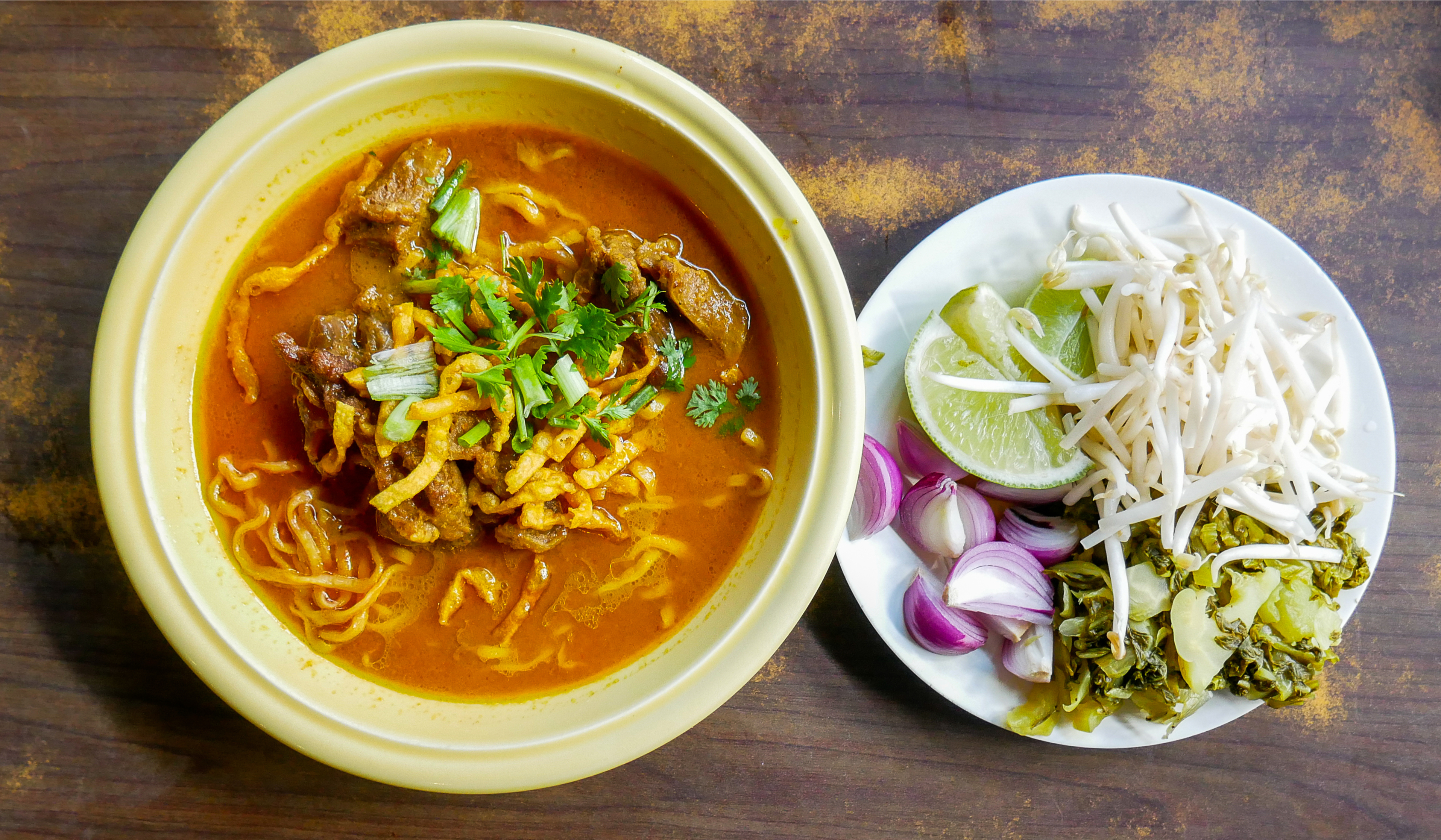
Best For: A True Local Flavour
Where: Chiang Mai, Thailand
When: May-Oct
If you want to find something spicy and pungent outside your comfort zone, but definitely delicious, then read on. In fact, even though Thailand is small, it offers four distinct regional cuisines: northern, southern, central and northeastern, each with uniquely different flavours.
Here are some of the features of Chiang Mai cuisine which you should know:
• It is heavily influenced by its northern neighbors, including Myanmar, Laos and China.
• The soups and curries are clear as coconut milk is rarely used.
• The cooler, jungle climate provides a variety of ingredients for gourmet meals, such as wild vegetables, mushrooms and herbs which enhance the tastes and flavours of this cooking
• The cuisine is slightly salty and bitter, not as spicy as in the South or as sweet as in central Thailand.
• Rather than serving fluffy steamed jasmine rice at meals, the staple food is sticky rice which is known locally as khao niaow.
We recommend that you visit Fern Resort Sunset bar. It’s Superb year-round and surrounded by sloping rice terraces and forests. It’s perfectly located for a cold beer as the sun goes down between the gap in the mountains. The Hop-pi-polla, is a stylish roadside BBQ hangout with incredible food. Picture it. The bright green shades of the wild jungle, the golden-brown of the pork sausage, the steam emanating from the warming curry, the perfumed smoke of the lemongrass on the grill…grab your chopsticks and enjoy.
Have a listen to our very own insider guide on Northern Thailand, Bruce Haxton, as he tells us how he helps guests to get the most out of the region by guiding them on a self-drive tour in their very own tuk tuk. (Yup, it’s on our list too!)

